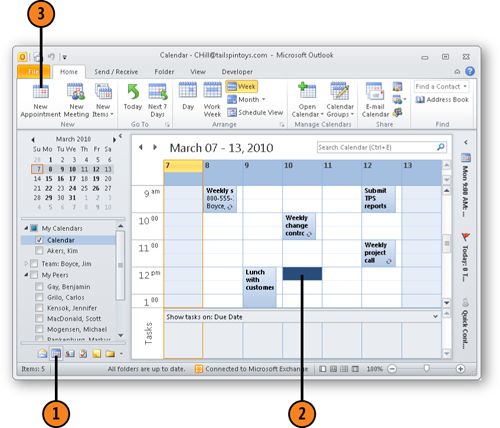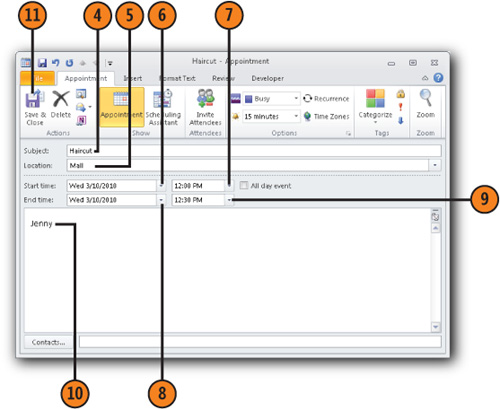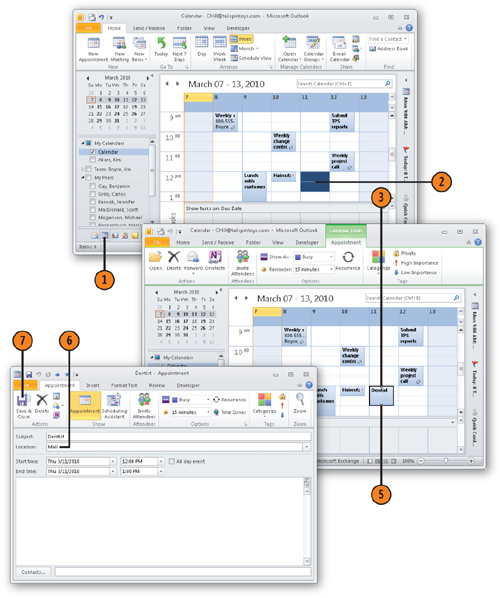An appointment in Outlook is an activity you enter
for a specific time that, unlike a meeting, doesn’t typically involve
other people or resources. When you schedule an appointment, you block
out a day, a time, and a location for that appointment to occur. As
mentioned earlier, Outlook also lets you set a reminder that flashes on
your screen and plays a sound to alert you to the appointment.
1. Add an Appointment with the Menu
Click the Calendar icon on the Navigation Pane.
Select a block of time for the appointment.
Click New Appointment on the Home tab.

Note:
Keep your appointment subjects as short as possible so that they’re easy to read in the Calendar view.
Type a description of the appointment in the Subject box.
Type the location of the appointment in the Location box.
Click the down arrow to the right of the Start Time date, and select the day of the appointment.
Click the down arrow to the right of the Start Time hour, and select the starting time of the appointment.
Click
the down arrow to the right of the End Time date, and select the ending
day of the appointment if the appointment spans multiple days.
Click the down arrow to the right of the End Time hour, and select the ending time of the appointment.
Click the Save & Close button.

Note:
If you’d like to
add extended information about an appointment, click in the text area at
the bottom of the Appointment window. Type a longer description here,
such as directions to the appointment location, important information
about the appointment, and so on.
Note:
You can print your appointments to the default printer by clicking the Print button on the File tab.
2. Add an Appointment Right on the Calendar
Click the Calendar icon on the Navigation pane.
Click and drag to select a block of time for the appointment on the Calendar.
Begin typing the Subject of the appointment, and the subject appears in the blocked-out space on the Calendar.
Double-click the appointment to open the appointment form.
Add the location, notes, and other information to the appointment.
Click the Save & Close button.

Note:
If you use Outlook with
a Microsoft Exchange Server account, others can easily see your
free/busy time. They know when you’re busy and can schedule meetings
with you based on this information.
Note:
To categorize the appointment, right-click the appointment and choose Categorize, and then choose a category from the submenu.